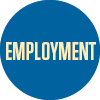This month’s Guest Blogger is Shelly Avery from Smola Consulting - a full service benefit and wellness consulting firm. Shelly has been working in the insurance industry for over 15 years. She earned her Bachelor of Business Administration with a dual major in Risk Management & Insurance and Human Resources from Temple University. Shelly holds her New York State Life, Accident & Health license and has passed two Certified Employee Benefit Specialist (CEBS) exams.
Shelly Avery
Open enrollment is the only time of the year that you can make changes to your health plan. Take the time to understand your premiums, cost, and benefits to make the best decision for you and your family to stay healthy and financially secure.
Premiums – How much do you pay for your insurance? Open enrollment usually means premium increases. Think of premiums like Amazon subscriptions – you get discounts on services (like doctor’s visits and prescriptions) but you pay even if you don’t buy.
Costs – Are you taking medications? Do you schedule that elective surgery you put off for too long? Many carriers offer online tools to estimate costs for services like that surgery. Every insurance company provides an Explanation of Benefits (EOB) that will tell you what you need to know about your previous costs:
Charged Amount – The amount you would pay without “subscribing” to insurance.
Allowed Amount – The discounted rate from your insurance. If you are on a High Deductible Health Plan (HDHP), this is the amount you will pay while in deductible phase.
Benefits – Coverage and costs for services may vary by plan. Review insurance In-Network providers and drug formulary before you commit. Plans may cover Out-of-Network providers, but it will cost you.
Copay = Dollar amount you pay for services.
Deductible = Dollar amount you pay for services before insurance pays – you pay the “subscription” Allowed Amount.
Coinsurance = Percentage of Allowed Amount you pay for services, insurance pays the remaining percentage.
Out of Pocket Maximum (OOPM) = Most you pay for services in the plan year. Once you reach this amount, all services will be paid in full until next year.
After you identify your health needs, apply the benefits of each plan and your premiums to determine which plan is best for you while also considering:
• Health Savings Account (HSA) and Flexible Spending Account (FSA) – Tax-free accounts used for qualified medical expenses.
HSA – You must be enrolled in a HDHP. You own the account. There is no requirement of how quickly you need to spend the money (you can save for retirement!), and you can adjust your payroll contribution any time during the year. Some employers may even contribute to your account to help you pay your deductible!
FSA – Available through your employer health plan. Unlike an HSA, your employer is not able to contribute. You must use your money each year, and once you enroll you cannot change your election for the year. You cannot be enrolled in a HDHP.
Wellness Benefits – Beyond offering preventive services free of charge, some carriers offer discounts to gyms or cash for working out. A trending benefit is access to meditation and stress reduction apps. Look for free programs available with your health insurance “subscription.”
Learn About Your Benefits Package:
Ask your employer about your benefits. If you need help finding individual coverage, Smola Consulting is here to assist you. Call us at 585-777-4080 or visit our website at smolaconsulting.com.







